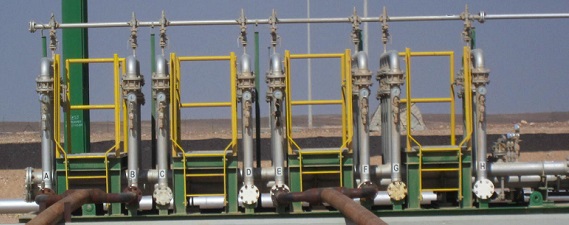Liquid petroleum pumped from a well is called crude oil. Crude oil consists of mostly hydrocarbons, but to different extent also of oxygene, nitrogen and helium. There are different standards for oil in different geographical regions, for example West Texas Intermediate (WTI), Brent and Omani Blend. Crude oil is also classified after its chemical composition, primarily density and sulfur. Crude oil with low sulfur content is classified as sweet and crude oil with low density as light. The density of crude oil is measured in relationship to the density of water according to American Petroleum Institute (API); if the oil’s API is higher than 10 it would float on water. If the density is lower than 10 it would sink. Heavy oil is defined as all liquid petroleum with an API below 20. Heavy oil is more difficult to produce, more expensive to refine and combustion is more polluting.


